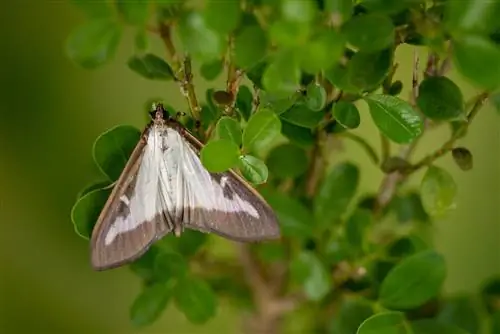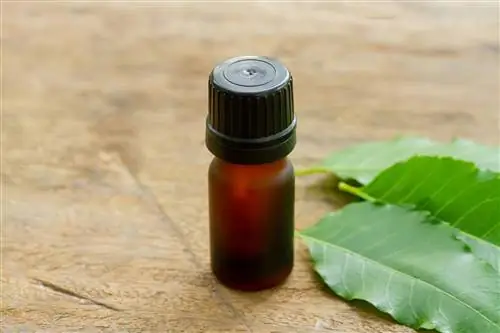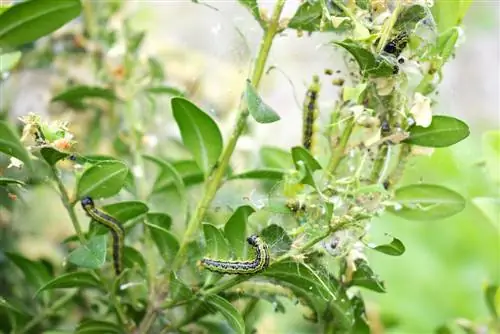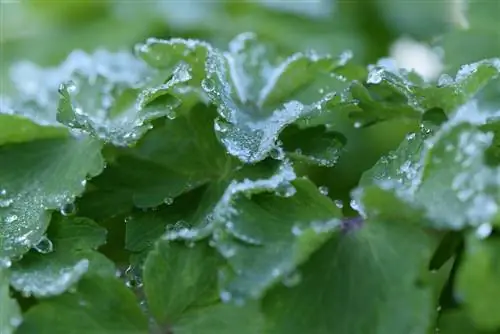- Author admin [email protected].
- Public 2023-12-16 16:46.
- Last modified 2025-01-23 11:19.
If there is a severe frost in winter, the boxwood moth, which migrated from Asia, is far from defeated. Because it can survive sub-zero temperatures unscathed and resume its damaging activities when the first warmth of spring arrives. Nevertheless, you can reduce it significantly with scissors!

What does the tree borer do when there is frost?
The boxwood moth (know. Cydalima perspectalis) does not freeze to death in frost. Because thelarvae from the last egg-laying hibernate in cocoons on the leaves of the boxwood. They will be active again from March/April. In early spring you can fight them with pruning and algae lime.
What sub-zero temperatures can the boxwood moth tolerate?
The last eggs are laid around September, after which the butterflies die. The generation of larvae hatched from these eggs protects itself from frost by pupating in cocoons. The larvae can survive up to -10 °C unscathed. Larvae that have already hatched do not survive severe frost. The larvae become active again around March when the thermometer permanently climbs above 7 °C.
How can I fight the larvae in winter by pruning?
The cocoons are tightly woven, making control difficult. Therefore, you should prefer the first pruning of the year to between January and March. By pruningmany overwintering larvae are simply cut away and disposed of. To avoid frost damage and other damage, be sure to pay attention to the weather:
- the cutting day must be frost-free
- without much sun and without rain
- The days afterwards should also be free of frost and rain
Short shoot tips generously to capture as many larvae as possible.
What other control options do I have in winter?
It has now been confirmed that the use ofalgae limealso works against boxwood borer infestation. It disrupts the development of the larvae. The fine powder can be spread after pruning in March. Then aspray with Bacillus thuringiensis is also possible.
How does late frost affect the boxwood moth?
Late frosts are generally survived well by the box tree moth. Only if this is accompanied by high temperatures below zero can it lead to larger parts of the population dying off.
Tip
Work cleanly when cutting to avoid damage
Use appropriate cutting tools with sharp blades to create smooth, quickly healing cuts. You should also clean and sterilize the tool before use. This will minimize the risk of frost damage and disease.






